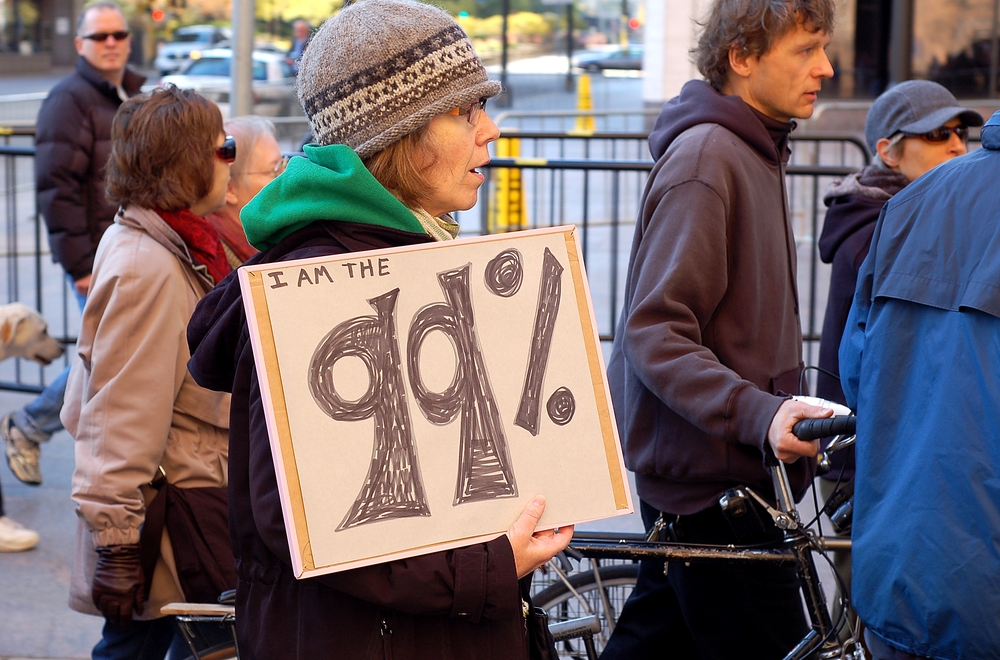The notion of rising income inequality has permeated modern American discourse and is assumed as inherent to our economic system such that any claim to the contrary is easily dismissed as ignorance or insincerity. Indeed, The Myth of American Inequality: How Government Biases Policy Debate is a rather jarring title. American inequality a myth? Yes, claim Phil Gramm, Robert Ekelund, and John Early. To show we have been misled, the authors dive into the obscure world of bureaucratic statistics. In the process, they fearlessly confront the dominant narrative and demonstrate that government’s ambitious tax and transfer programs have substantially mitigated income inequality (properly measured) while incentivizing idleness.
All three economists bring impeccable credentials to the subject. Ekelund’s scholarly career has been especially prolific, while Gramm and Early contribute unique insights as a former U.S. senator and former assistant commissioner of the Bureau of Labor Statistics, respectively. Together they make a formidable team, capable of making sound methodological judgments, dissecting measurement challenges, and clarifying ambiguous terms. Their goal “is to start a debate, not to end one.” This is a great service, especially for those who wrongly assume that Thomas Piketty’s Capital in the Twenty-First Century was the last word on the subject.
The authors make several opening claims, which set the tone for the remaining chapters. Consider these three: government transfer payments have increased massively during the past half-century; the Census Bureau in 2017 counted a mere one-third of transfer payments as income for those who received them; and net income inequality has actually fallen by 3% since 1947. The first claim is perhaps unsurprising. The second pleads for further investigation—why not count subsidies? Yet the third claim gets to the heart of the book: Just what, exactly, do the reported inequality statistics actually measure? Are they measuring the income people are earning through work, or are they accounting for the net income they possess after taxes, transfers, and benefits?
Economic theory informs us that individuals earn as income what they produce in value, but the income individuals actually have at their disposal must account for taxes and transfer payments. Yet compensation as a whole takes many forms, with some elements easily measured (a paycheck) and others less so (comprehensive healthcare benefits). Compensation packages have changed dramatically over the past three-quarters of a century. Non-cash employer benefits have increased and so have government transfer programs. These changes, coupled with the evolution of the tax code, have not only altered the picture of income inequality but also made measuring it much more complex. The authors break down this complexity in ways that reveal the true nature of income inequality in America.
The most striking contrast between rich and poor that Gramm, et al., reveal is not their ability to consume but rather their actual productive capacities. Consider one illustration the authors provide. The top quintile’s average earned household income in 2017 was more than 60 times that of the bottom quintile. After accounting for taxes and transfer payments, however, that multiple falls from 60 to 4. Adjusting further to account for household size, the per capitamultiple falls from 4 to 2.2. Bernie Sanders fans might seize upon a 60-fold difference to champion higher taxes on corporations and the rich. But with a mere twofold difference in actual lived experience, it appears Sanders has already achieved his redistribution objectives. Yet should America be content with the blunt instrument of state redistribution to lift up the bottom quintile? And what are the unintended consequences of this redistribution? The authors highlight at least one deeply troubling result: Despite working more, middle- and fourth-quintile households actually possess less per capita net income than those in the bottom quintile.
Income inequality is a relative measure, and the authors go beyond this inequality to examine outright poverty. By this measure, most of America’s poor are far better off today than they were 70 years ago. The steady, mid-20th-century downward trend in poverty nevertheless stagnated despite the massive increase in aid that the 1960s War on Poverty generated. While government safety-net programs have essentially ensured the elimination of extreme poverty, it has had an underappreciated severe side effect: Idleness among working-age adults has dramatically increased.
In addition to poverty trends, The Myth of American Inequality examines the trajectory of income inequality by contrasting international differences, evaluating the implications of tax code changes, and dissecting other measurement fluctuations. Here the book becomes rather tedious, but meaningful intertemporal comparisons of income inequality make analysis of such details unavoidable. Although America may have a reputation for income inequality more severe than in other developed nations, the book highlights the most meaningful difference when they conclude, “Household income in the United States differs in only one significant way from that in other nations: Americans at all levels have a lot more of it. American income after taxes and transfers is not distributed more unequally than income in some other large, developed economies.”
Although poverty reduction is a welcome benefit of the past century’s global economic growth, this success remains unsatisfactory insofar as some are excluded and still depend primarily upon transfer programs to provide for basic needs. Unfortunately, earned income inequality in America has undoubtedly increased, and the authors address this problem head on, pinpointing its chief underlying cause: America has an intolerable number of poor, working-age individuals who are not part of the workforce or are notably underemployed. In 2017, only “36 percent of prime work-age persons in the bottom quintile [were] employed [and their] average number of hours worked per week was only 17.” The reasons for this are complex, and they include numerous disincentives to work, which are particularly harmful since work is inherently dignifying. The authors go on to address the relevance of sociological changes such as progress for women in the workplace, two-income households, and occupational choice. The gap between bottom and top is largely a consequence of poorer households working less (if at all), while wealthier households are more and more composed of highly educated, dual-income earners.
The Myth of American Inequality gets particularly interesting when it assesses how inflation affects measures of well-being. Economists have long sought to remove the effects of inflation when making historical comparisons, and the techniques for doing so are fraught with challenges. Measurement biases hamper our ability to make intertemporal comparisons, and Gramm and his coauthors sort through these challenges, examining how the Bureau of Labor Statistics approaches inflation measures and demonstrating that the consumer price index overstates inflation and has thus underestimated the growth of real income over time. A concrete consequence of this is that the poverty threshold has “overstated the standard of living below which families are defined as poor by 72 percent.”
What about the so-called super rich? Aren’t they merely benefiting from inherited wealth and not contributing their fair share of taxes? Not quite, according to the authors. The wealthiest Americans largely obtained their riches because of their extraordinary productivity, reaping the benefits of their entrepreneurial endeavors. The authors aim most of their myth busting at Emmanuel Saez and Gabriel Zucman, two economists whose work claims that the wealthiest have lower effective tax rates than the middle class. Once again, what is measured actually matters; calls for a return to higher marginal tax rates, which are not based on facts, are ultimately misplaced. Furthermore, the authors remind us that taxes are not the only means of providing one’s “fair share” to society. The highest income-earning households have created wealth not merely for themselves but for society as a whole, employing millions of individuals in the process.
Having debunked many of the myths surrounding income inequality, the authors focus on two related yet distinct notions that must be part of the conversation: economic mobility and economic progress. Snapshots of income inequality do not reveal economic mobility. This is important because a household’s income profile changes over time. A young household in the bottom quintile may eventually exceed the 60th percentile. Sure enough, many do, as the authors demonstrate. Furthermore, a family in the lowest quintile does not consign its descendants to the same fate. There is substantial generational churn, which gives lower-income households hope that they and their children are not destined to remain impoverished.
Upward mobility also corresponds with the general economic progress observed in the United States as a whole. It was heartening to see these two examples: 1) “An extraordinary total of 77.2 percent of all households had incomes in 2017 that were equivalent to the top quintile of 1967 in inflation-adjusted dollars.” 2) “An average lower-income person in 2017 will live eight years longer than a top-quintile person did in 1967.” In 50 years, both real incomes and longevity have improved dramatically for low-income households, and thankfully this progress crosses racial lines. Although black households are still significantly overrepresented in the bottom income quintile and underrepresented in the top quintile, the general trend shows a clear reduction in racial disparities.
While claims of rising income inequality in America are spurious, much remains to be done. Massive redistribution schemes at best address the symptom and at worst aggravate an underlying cause. Ideally, reducing income inequality will be accomplished by increasing the productive capacity of households in the bottom quintile. With that in mind, the authors wrap up their work by making multiple policy recommendations. These include fixing failing schools and removing many ridiculous occupational licensing requirements. However, the most important is removing disincentives to work, which has exacerbated earned income inequality and impedes the dignifying power of work. False narratives and skewed statistics make such changes more difficult. As the authors wisely point out: We must get our facts straight first before we can implement better policies. The Myth of American Inequality is a major step in that direction. It deserves a wide readership.

